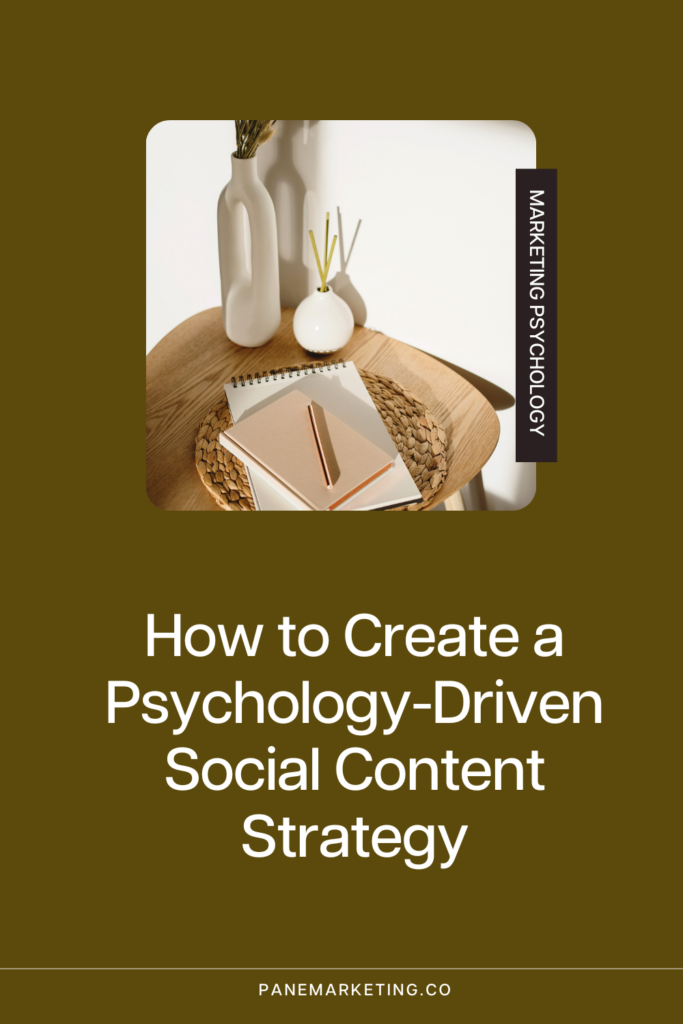Creating an effective social media content strategy is key to successful marketing. But, when it comes to creating an engaging content strategy, it’s not just about what you post, but also how you post it. To maximize engagement and reach, you need to understand the psychology behind social media content and the science behind why people act the way they do.
Research has shown that people are more likely to engage with content that speaks to their emotions, rather than content that is purely informational. Crafting content that resonates with people on an emotional level can be a powerful tool for driving engagement and creating meaningful connections with your audience.
Let’s explore the significance of recognizing your audience, the potency of storytelling, the influence of visuals, and the psychological triggers you can effortlessly tap into.
Understand Your Audience
The first step in creating a psychology-driven social content strategy is to understand your audience. Knowing who your audience is and what they care about will help you create content that resonates with them.
Start by researching your target audience. Look at their demographics, interests, and behavior. This will help you understand what kind of content they’re likely to engage with.
Once you have a better understanding of your target audience, you can start to tailor your content to their interests. You can also use this information to create content that speaks to their needs and values.
You should also consider the context in which your audience is viewing your content. Are they scrolling through their feed on their lunch break? Are they browsing their favorite website? Knowing the context in which your content is being viewed can help you tailor your message to be more effective.
Consider looking into their social media habits, such as which platforms they use the most and how frequently they post. You can also look at what kind of content resonates with them by analyzing the engagement rates for different types of posts.
Additionally, you can survey your audience to get direct feedback on what type of content they want to see from you. This will help you create content that speaks directly to their needs and interests.
The Power of Storytelling
Storytelling is a powerful tool for engaging your audience. People are naturally drawn to stories and are more likely to remember and connect with them.
When creating your content, think about how you can use storytelling to engage your audience. Think about the characters, the plot, and the message you’re trying to convey.
You can also use storytelling to create an emotional connection with your audience. For example, you can use stories to evoke feelings of joy, sadness, or hope. This will help your audience connect with your content on a deeper level.
Crafting Social Media Content That Sparks an Emotional Response
Creating content that resonates with people on an emotional level can be a powerful tool for driving engagement and creating meaningful connections. To craft content that sparks an emotional response, you need to understand the psychology behind social media content and the science behind why people act the way they do.
Start by recognizing what emotions your audience is likely to respond to. For example, if your audience is young adults, they may be more likely to respond to content that speaks to their sense of adventure or freedom. If your audience is older adults, they may respond better to stories that evoke feelings of nostalgia or security.
Once you’ve identified the emotions you want to evoke, it’s time to craft your story. Think about how you can use storytelling techniques such as character development and plot twists to create an engaging narrative. Additionally, consider how visuals such as photos and videos can help bring your story to life and create a more immersive experience for viewers.
Finally, remember that it’s not just about what you post but also how you post it. Keep in mind the context in which your content is being viewed – are people scrolling through their feed on their lunch break? Are they browsing their favorite website? Knowing this will help you tailor your message for maximum impact.
The Impact of Visuals
Visuals are also an important part of creating a psychology-driven social content strategy. People are more likely to engage with content that includes visuals, such as photos, videos, and graphics.
According to research, the majority of people (65%) are visual learners, meaning they require visual aids to effectively process and remember information. Visual communication offers a unique advantage over written or verbal communication as it’s processed much faster in our brains. Studies have revealed that the brain can process images and videos around 60,000 times faster than text, making visual communication an incredibly valuable tool.
Research has also found that people can remember 80 percent of what they see, whereas they can only recall 20 percent of what they read and a mere 10 percent of what they hear. This is particularly evident in today’s fast-paced digital age, where people often engage in multitasking and have shorter attention spans.
When creating visuals for your content, think about how you can use color, shape, and texture to evoke emotion. Screenshots, infographics, and videos are effective ways to deliver a message. You should also consider the size and placement of your visuals to ensure they’re going to be easy to see and understand.
Leverage Color Psychology in Social Media Content
The use of color psychology in social media content can be a powerful tool for driving engagement. Colors have the ability to evoke emotion and create an emotional connection with your audience. For example, blue can invoke feelings of trust and security, while red can evoke feelings of excitement and energy.
When using color in your graphics or images, think about how you can use it to evoke the desired emotion or feeling. You should also consider how the colors you choose will look on different devices and screens, but most importantly, you need to consider how different colors interact with each other.
Using complementary colors can create visual interest and draw attention to your content, while using analogous colors can create a sense of harmony and balance. Experiment with different combinations to see what works best for your content.
One last point to mention with color is that you should always consider the context in which your content is being viewed. Different cultures may associate different meanings with certain colors, so make sure you take that into account when creating your content.
Psychological Triggers
Psychological triggers are an effective way to engage your audience and maximize engagement. By tapping into psychological triggers, you can create content that resonates with your audience and encourages them to take action.
One of the most powerful psychological triggers is fear. Fear is a powerful motivator and can be used to create urgency and encourage people to take action. For example, if you’re promoting a limited-time offer, you could use fear of missing out (FOMO) as a trigger to get people to act quickly.
Social proof is another effective psychological trigger as people are more likely to trust something if it has been endorsed by others. When creating content, consider how you can use social proof as a trigger for engagement. You could include customer reviews or testimonials in your social posts or highlight influencers who have shared your content.
Finally, scarcity is also an effective psychological trigger. When something is scarce or limited in quantity, people perceive it as more valuable and are more likely to take action. You could use this tactic when offering discounts or small-batch offers on products or services to create urgency and encourage people to act now.
——
Pin this image so others can enjoy this post. ⬇

